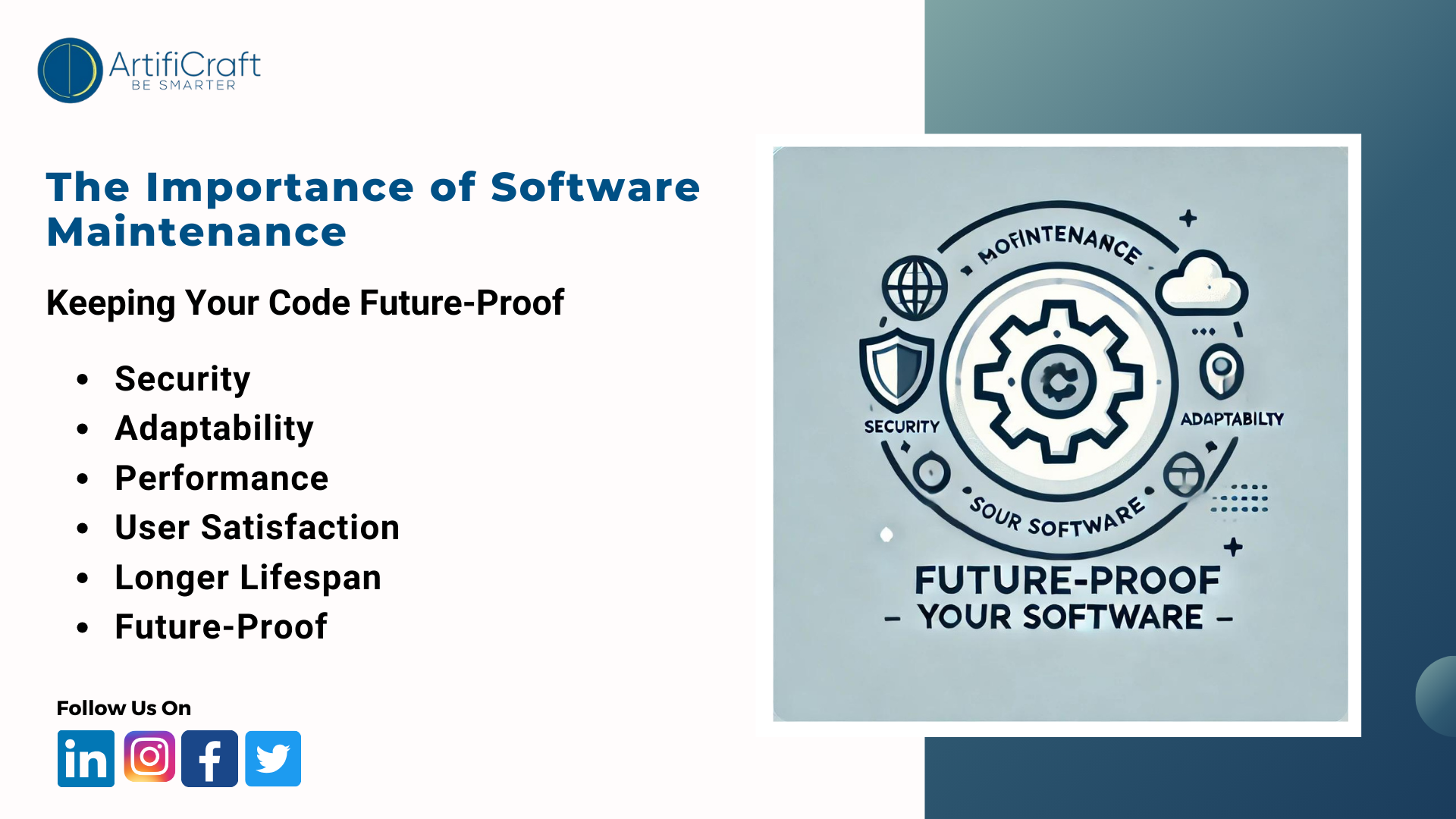The Importance of Software Maintenance: Keep Your Code Future-Proof
In today’s fast-paced digital world, simply developing and deploying software is not enough. With evolving technologies, user expectations, and the ever-present threat of cybersecurity vulnerabilities, software maintenance has become a critical part of the development lifecycle. It’s essential to ensure that your software remains relevant, secure, and efficient over time. This is where software maintenance comes into play—ensuring that your code stays future-proof.
What is Software Maintenance?
Software maintenance refers to the process of updating, optimizing, and improving a software product after its initial deployment. It’s not just about fixing bugs; it also involves adapting the software to new environments, enhancing its features, and ensuring it meets future needs. Think of it as a long-term investment to keep your software running smoothly.
There are four primary types of software maintenance:
- Corrective Maintenance: Fixing bugs and issues reported by users or discovered through internal testing.
- Adaptive Maintenance: Updating software to be compatible with changing hardware, software environments, or operating systems.
- Perfective Maintenance: Improving and enhancing features based on user feedback or evolving business needs.
- Preventive Maintenance: Proactively identifying potential issues and improving software resilience to avoid future problems.
Why Software Maintenance is Crucial
1. Ensuring Security
One of the most significant reasons to invest in software maintenance is to safeguard your system from security vulnerabilities. As hackers develop more sophisticated techniques, older software versions are at risk of being exploited. Regular updates, security patches, and timely upgrades can help protect your software from new threats and keep your data safe.
2. Adapting to Technological Changes
Technology is constantly evolving. New versions of operating systems, libraries, and tools are released frequently. Without maintenance, your software may become incompatible with newer technologies, leading to reduced performance or even complete failure. Adaptive maintenance ensures that your software stays relevant in an ever-changing tech landscape.
3. Enhancing Performance
Over time, software may start to lag, suffer from inefficiencies, or experience performance bottlenecks. Through perfective maintenance, you can optimize your code, improve its performance, and ensure that it can handle growing user demands. Whether it’s refining algorithms or optimizing database queries, maintenance ensures your software remains fast and responsive.
4. Improving User Experience
As users interact with your software, they may provide feedback on what features work well and what needs improvement. Software maintenance allows you to continuously enhance the user experience by making the necessary updates and adding new features. By keeping users satisfied, you’re also ensuring higher retention rates and a stronger reputation in the market.
5. Prolonging Software Lifespan
Without regular maintenance, software can become outdated and may eventually need to be replaced altogether. By proactively maintaining your code, you extend the lifespan of your software and avoid the costs associated with completely overhauling or redeveloping it. Regular maintenance ensures that your software can evolve alongside your business and industry needs.
6. Future-Proofing Against Obsolescence
Future-proofing your software means keeping it adaptable to future challenges and requirements. This is especially important as new regulations (like GDPR) emerge or as industry standards change. By maintaining and updating your software, you can ensure that it remains compliant with future standards and avoid hefty penalties or service disruptions.
Best Practices for Effective Software Maintenance
- Plan for Maintenance Early: Software maintenance should not be an afterthought. Consider future maintenance needs during the initial development phase to design more adaptable, modular software.
- Automate Testing: Regular updates and bug fixes require frequent testing. By automating testing processes, you can ensure faster and more reliable maintenance cycles.
- Monitor Performance Regularly: Use performance monitoring tools to detect inefficiencies or potential issues early. This proactive approach allows you to resolve problems before they affect the user experience.
- Document Everything: Detailed documentation makes it easier for developers to understand the software’s functionality and maintenance history. This reduces the time needed for future updates and ensures consistency across maintenance tasks.
- Set Clear Maintenance Schedules: Establish regular maintenance intervals for security patches, updates, and performance optimization to avoid falling behind on essential fixes.
Conclusion
Software maintenance is an ongoing process that ensures your software continues to deliver value long after its initial release. Whether it’s securing against new threats, optimizing performance, or future-proofing your system, investing in regular maintenance will save you from costly downtime, improve user satisfaction, and extend the lifespan of your software.
Don’t view software maintenance as a burden—it’s a strategic move that keeps your software aligned with the future.
